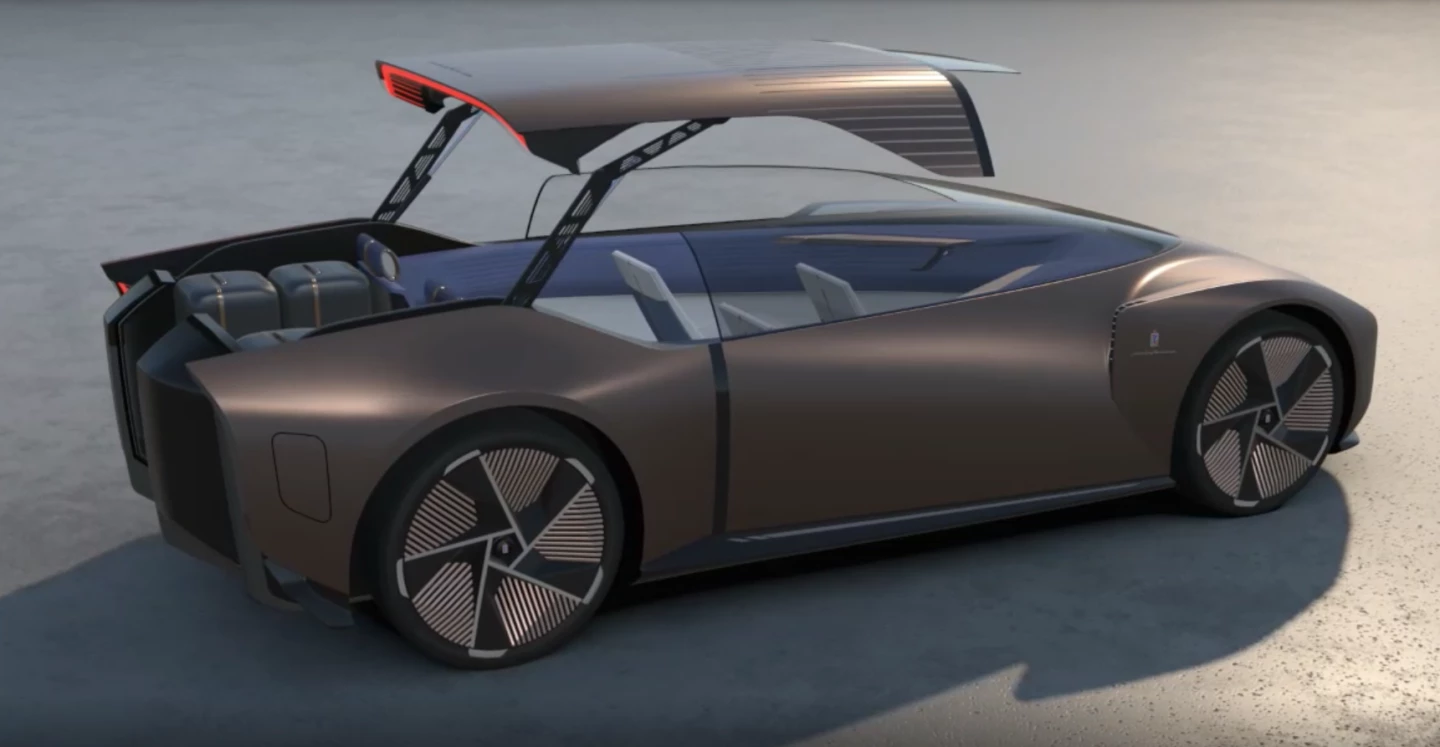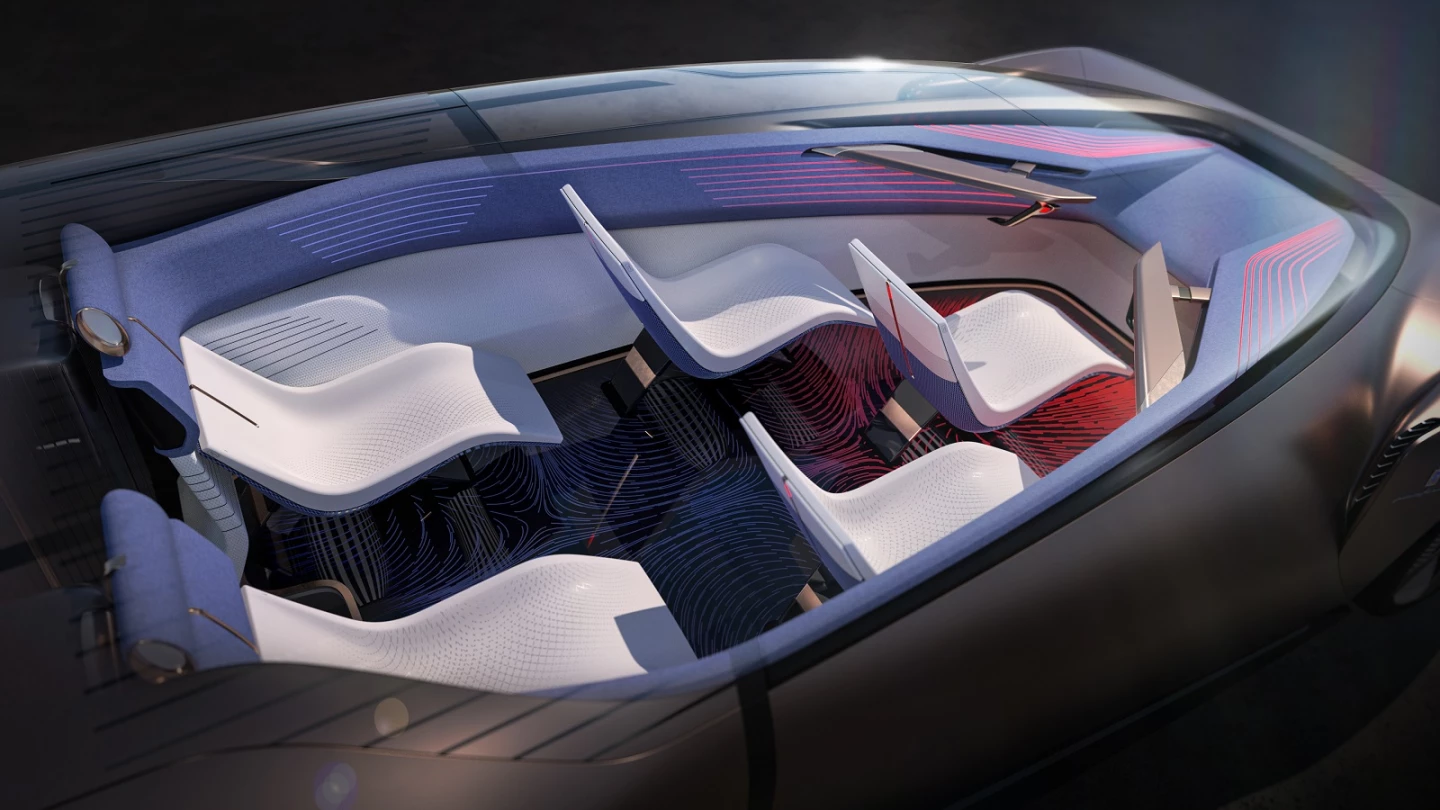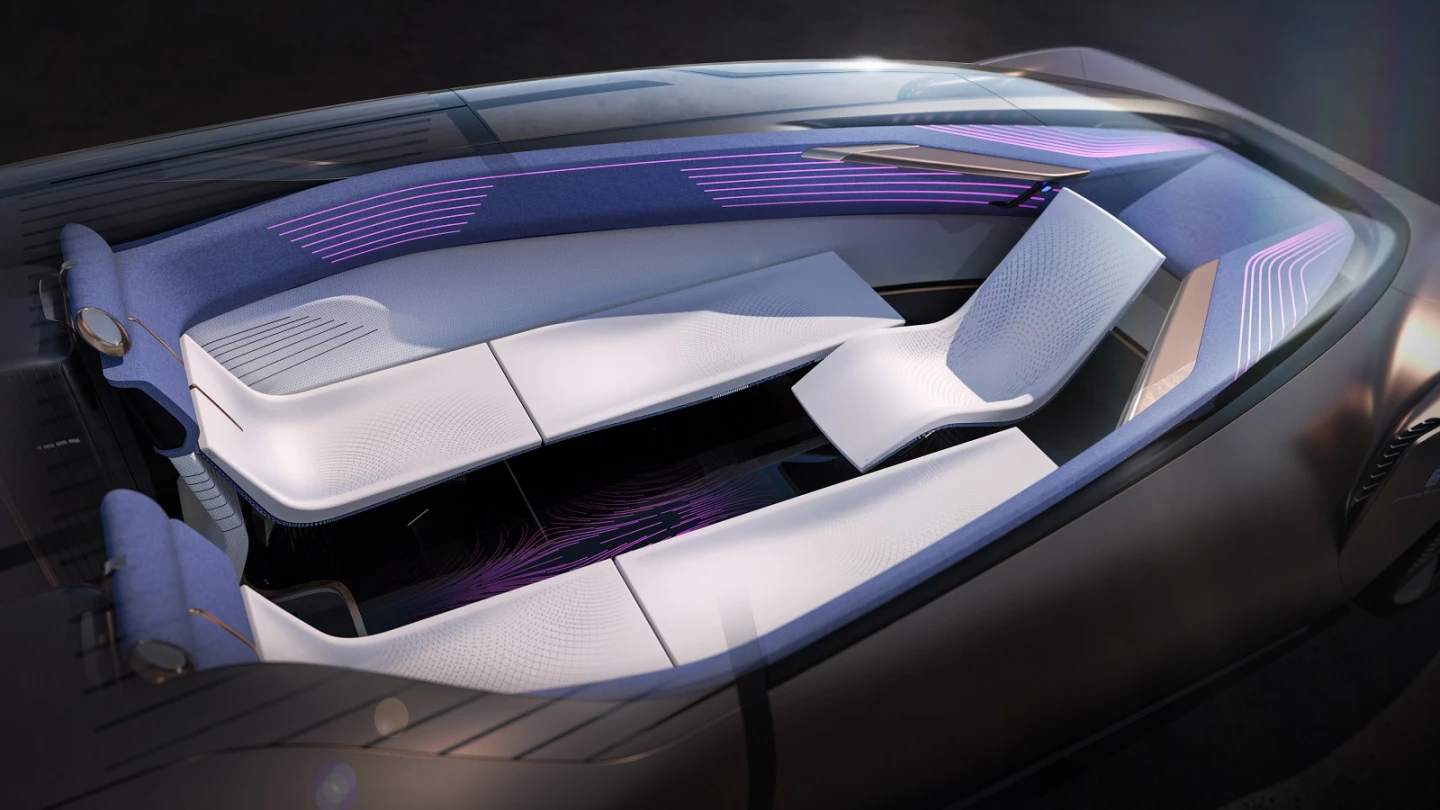Given the lack of auto shows, it's been a rather slow year for envelope-pushing concept cars. But Pininfarina makes up for lost time with the all-new Teorema, reshaping automotive exterior and interior packaging for a more comfortable all-electric self-driving future. The VR-crafted concept car fills out its unique pod-like body with a convertible interior that's nearly as comfortable as a camper.
Too often we've seen auto companies rave about the creative possibilities invited by electric and self-driving technologies, only to end up churning out the same boring vehicle shapes and styles we've had for decades. If an empty under-hood, flat floor and lack of driver controls really free you to create something different, why not create something different? Why not build something that brings interior comfort and/or aerodynamics to extreme levels previously unseen in the industry?

That's the direction in which Pininfarina moves with the Teorema. The concept's smooth, rounded body looking more like the latest Hyperloop capsule than a traditional car. The exterior may draw the most attention, but it's the interior that lays the foundation for the entire concept. Starting with the key advantages of an all-electric platform — compact, decentralized powertrain and flat, open floor — Pininfarina designers in Cambiano and Shanghai worked to create a more home-like layout and ambiance inside before penning a body around it.
The Teorema experience begins just before entry, when a central panel in the glass canopy slides opens and the entire rear body shell swings up and forward, allowing occupants to walk aboard as if walking through the doorway of a house — much more natural than bobbing and weaving through a traditional car door and reminiscent of what Renault accomplished with the 2018 EZ-GO concept.

Each occupant walks to his or her seat, guided along by the swirl of lights integrated into the floor. The generously spaced seats create a full walking aisle down the center of the battery-top floor, while the slide-open glass canopy panel allows passengers to walk naturally without ever having to duck down.

At 212 inches (540 cm), the Teorema measures longer than a GMC Yukon, but Pininfarina avoids any temptation to stuff in seats and maximize occupancy, instead relying on a unique combination of single front seat and two rear rows each occupied by left and right seats. In addition to allowing for the aforementioned standing-height walk-in entry, the 1 + 2 + 2 layout leaves each occupant free to move around the vehicle or reposition.
The rear two rows of seats can combine and fold into two individual chaise lounges, providing an opportunity to kick back and relax or sit in a conference-style arrangement. When grabbing a nap, the Continental Smart glass tints around the rear cabin to enhance the restful atmosphere.

Individual drive modes correlate to different interior configurations. In full Level 5 autonomous mode, for instance, the driver is able to swivel around 180 degrees and interact freely with everyone else on board. In drive mode, the driver faces forward and uses the dual-joystick control system to operate the car while rear passengers remain engaged via the canopy glass-integrated WayRay augmented reality system providing both basic trip info and point-of-interest details. Passengers can use structure-integrated controls to pull up more details or share information.

In addition to a projectile-like shape and dramatic Kamm tail, the Teorema includes full-body venting to cut drag and improve aero performance. The front fender ducts direct air around the tires while longer side channels let it flow along the flanks and out the rear just inward of the tail lamps.
The Teorema was created entirely via virtual reality, but we have to think the Pininfarina team is absolutely itching to run that sleek, ducted body through the wind tunnel, so maybe a more tangible version will show up down the line.
Source: Pininfarina



















